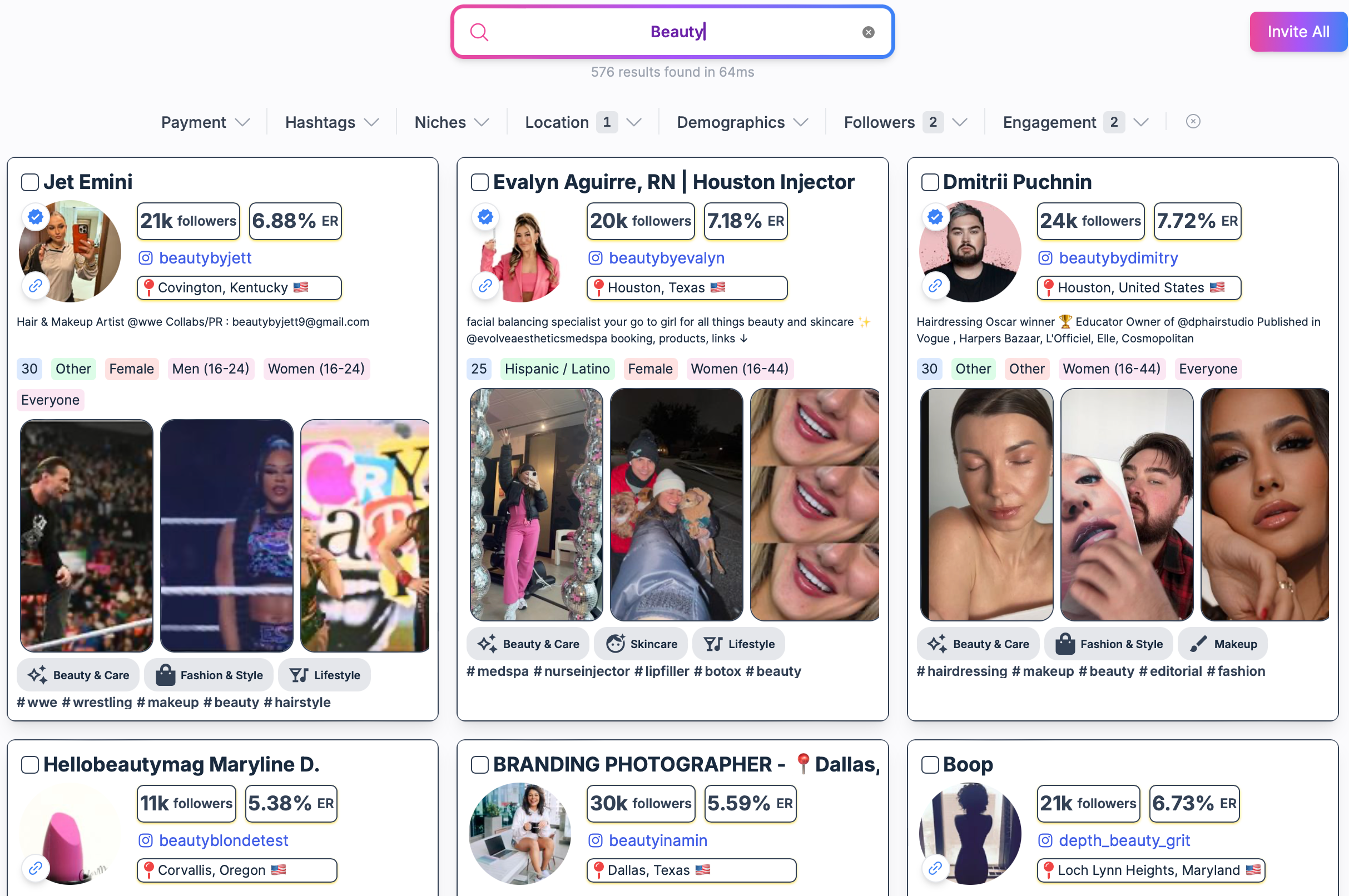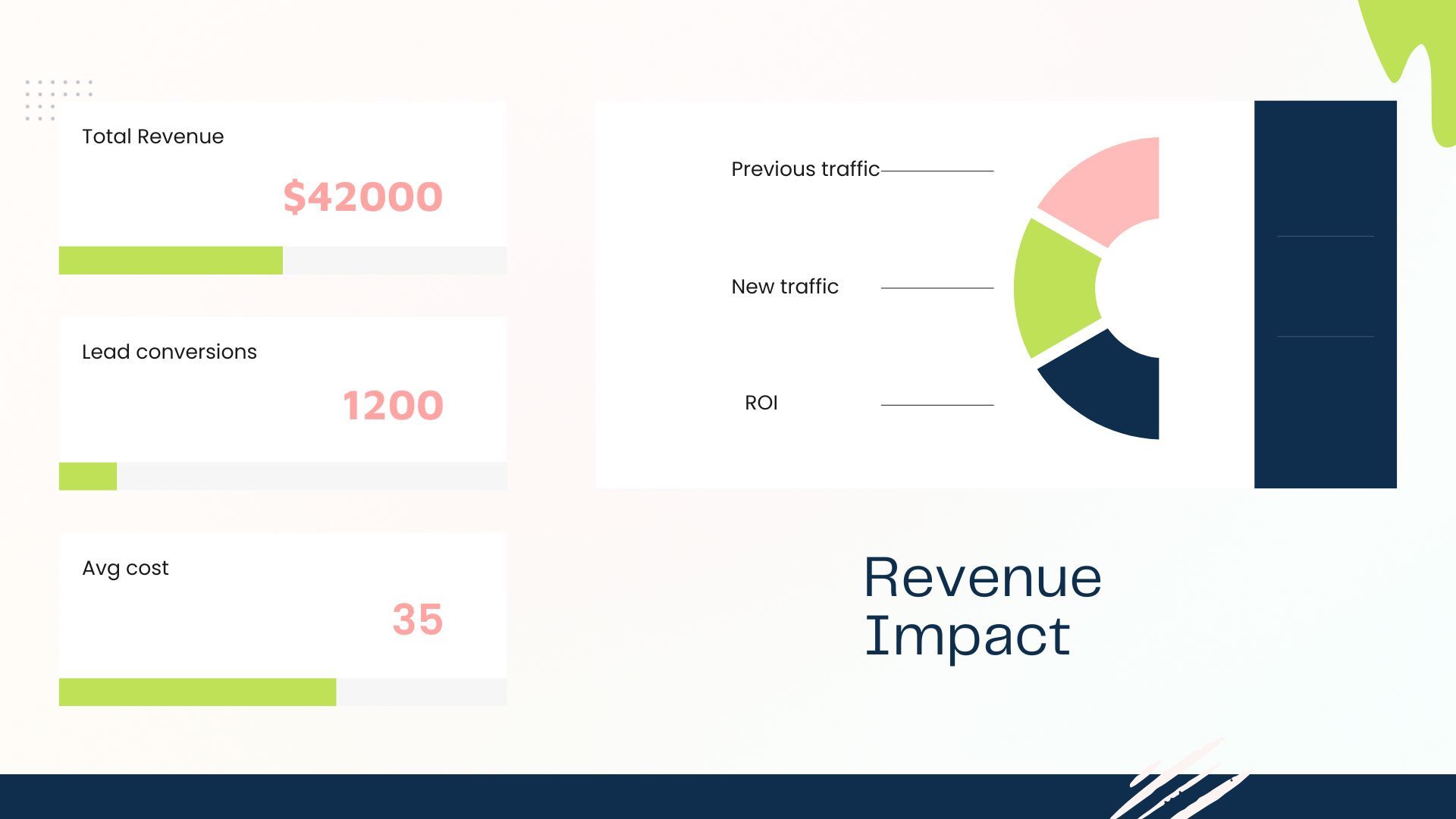The way businesses buy things from each other has changed, and so does the way brands need to market. And, we also think it will keep changing in the next period. Politics, global events, and general uncertainty will impact every aspect of a business.
However, most purchases today aren't made by just one person. So, they involve a group of people, each of whom hastheir own needs and priorities. Because of this, simple marketing methods like broad ads or email campaigns are not as effective as they used to be.
How does it work now? Making people trust you. Buyers today want real connections, authenticity, and relevance.
Alright, but what about B2B?
Step 1: Rethink your B2B marketing strategy
Do you have a real impact?
Still, one of the most powerful instruments in B2B marketing is word-of-mouth. Indeed, it influences 91% of business-to-business transactions. (wisernotify)
In addition to promoting goods, influencers serve as reliable consultants in their field, directing discussions and influencing choices.
This is a significant distinction from B2C influencer marketing, which frequently emphasizes aspirational content and rapid conversions.
In business-to-business transactions, establishing enduring connections and managing intricate purchasing processes are crucial.
Step 2: Understand the role of B2B influencers
Why you don't hear about B2B influencers too often?
In contrast to B2C influencers, who frequently thrive on lifestyle appeal, B2B influencers are practitioners, thought leaders, and experts. Their practical experience and insights, not just the number of their followers, have gained themtrust.
Brands can use trustworthy networks to get their useful content to the right people, but only if they work together.
Let's take a cybersecurity firm as an exemple.
This is educating executives about evolving threats by partnering with a renowned ethical hacker. This approach offers more than just clever marketing; it provides a credibility boost that traditional advertising cannot match.
Gaining a competitive edge through leadership
A very important aspect of influencer marketing is that influencers themselves are becoming a business model.
Influencer partnerships are an important part of any modern business-to-business social media strategy. Forward-thinking brands are shifting their focus from transactional marketing to value-driven partnerships that set them apart as leaders in their fields.
Do you know what it means to be working with the right voices? Well, brands can:
- Become experts in their field
- Get in touch with important decision-makers
- Increase engagement and sales
Need some help getting going? Check out this B2B Social Media Strategy Guide.
Step 3: Find the right B2B influencers for your brand
Don't try to get a lot of followers. To use B2B influencer marketing effectively, you need to find partners who:
- Really understand your industry
- Share your values
- Talk directly to your target audience
What real influence looks like when looking at possible influencers, these things should be at the top of your list:
- Knowledge: Do people in your field know them as thought leaders? Do they know how to solve the problems your audience is having?
- Alignment with the audience: Does their community fit your ideal customer profile (ICP)?
- Quality of engagement: Are they starting conversations or just getting likes?
People who have a small, active following of CFOs or CTOs are often more valuable than people who have a huge, general audience.

Step 4: Vet and qualify influencer partners
Data, data, data everywhere! But, not all metrics are worth considering. Go beyond surface-level metrics:
- Credibility: Look for awards, speaking engagements, guest features, and client testimonials.
- Content quality: Does their messaging align with your brand voice? Is it insightful and consistent?
- Industry impact: Are they influencing decisions and contributing to larger conversations in your space?
Discovering hidden influence
This is hard to get for most people, but not all influential people are in the spotlight. Relationship mapping tools can help you find internal champions and micro-influencers who have a lot of power over buying decisions. You can also find niche experts on sites like Social Cat that use keywords, hashtags, and engagement metrics.
Here's a helpful breakdown of how B2B influencer selection is different from B2C:
| Selection criteria | B2b approach | B2C approach | Why it matters |
| Objective | Lead generation, credibility | Brand awareness, quick sales | B2B is built for long-term growth |
| Expertise | Deep industry knowledge | Lifestyle relevance | Thought leadership wins in B2B |
| Audience | Professionals, decision-makers | General consumers | B2B requires niche targeting |
| Content | Insightful and data-driven | Entertaining and visual | B2B buyers want substance |
| Metrics | Pipeline growth, traffic, engagement | Impressions, sales, reach | B2B tracks business outcomes |
Step 5: Build long-term relationships with influencers
For B2B influencer marketing to work, you need to plan ahead. It's not about one-time campaigns... it's about making relationships that work for both sides.
1. Taking the first step
Like everywhere else, when it comes to B2B influencer marketing as well, first impressions are very important.
Sending a cold message with a general message won't work. Instead, approach possible influencers with genuine interest and a clear goal in mind.
How to make the first move count:
- Do your work: read their blog posts, watch their interviews, and learn about the new projects they've been working on. Bring up a specific thing they wrote or said that fits with your brand.
- Start with something of value. Instead of making a pitch right away, offer early access to a new product, an invitation to a private event that only they know about, or a chance to work together on content that will benefit their audience.
- Make it your own: Do not use mass templates. Make your message fit their expertise, tone, and the type of people who will be reading it.
Finding the right influencers, won't be enough. Creating a connection is a must.
2. Keep the connection going
You can't just "set it and forget it" after the first email. To turn a first meeting into a long-term partnership with influencers, you need to be consistent.
Here are a few tips on how to maintaing a connection:
- Read and interact with their content often: Share, like, and comment on their posts all the time, not just when it helps your campaign.
- Do something with them besides the campaign: Call them in for panel discussions, product feedback sessions, or internal brainstorming sessions. You can tell they're not just vendors because of this.
- Celebrate their wins. Tell them you're proud of them when they get an award, release a new course, or reach a major goal. Being a person is just as important as having a plan when building a relationship.
If there is one metric that is more valuable than the others is the engagement rate. So make sure you engage!
3. Making both sides better off
Influencer marketing isn't just about getting something, it goes both ways. Think about what your influencer wants from the partnership (it doesn't have to be only money!). This will help you get the best results.
- Ways to make sure that both parties benefit:
Know their goals. Are they trying to build authority in a niche topic, grow their email list, or reach more people on LinkedIn? Make your offer fit the situation. - Don't just think of cash: Even though money is important, a lot of B2B influencers value getting early access, chances to be thought leaders, or meeting new professionals.
- Co-create with a purpose: Instead of telling people what to write, work together on ideas. Let them choose the type of pitch that works best for their audience, like a podcast interview, a LinkedIn carousel, or an educational webinar.
Step 6: Co-create content that builds trust and converts
B2B influencer content that works is collaborative, educational, and based on strategy, not just advertising.
1. Making strategic content
To begin, figure out what your audience's biggest problems are. Then work with people who have a lot of influence who can talk about those problems directly. If your customers care about following the rules, don't just hire someone who ispopular; find someone who is an expert in regulatory strategy.
2. Best-performing types of content
• White papers and research reports are great for in-depth studies and getting insights from data. (Check our last influencer marketing report)
• Webinars and roundtables: These help people talk to each other and bring together leaders of thought.
• Podcasts and blog series: great for telling stories and keeping people interested in your brand over time.
3. Excellence in editing
A simple editorial workflow will help you keep your content high-quality and on-brand.
Give influencers clear rules about tone, key messages, and what to do and not to do, but let them use their own voice and creativity.
Avoid content that is too promotional. Instead, write pieces that are useful, educational, or insightful and give the audience real value. A review process where everyone works together keeps everything in line without slowing things down.
Step 7: Measure what matters in your B2B campaigns
If you want to show impact, don't just use vanity metrics. Watch how your influencer campaigns add to the sales process as a whole.
Draw a map of the funnel's influence
- Raise awareness: Keep an eye on traffic, mentions, and shares.
- Think about keeping an eye on content downloads, demo requests, and webinar sign-ups.
- Conversion: Use UTM tracking, promo codes, and CRM data to link leads and closed deals to the right people.
1. Key metrics to monitor
| Metric | What it measures | Why it matters |
| Website traffic | Audience interest | Measures visibility |
| Content downloads | Value of gated content | Lead qualification |
| Webinar registrations | Thought leadership draw | Lead nurturing |
| Demo requests | Sales-readiness | Pipeline development |
| Conversions | Goal completions | Revenue generation |
| Sales cycle length | Deal velocity | Sales efficiency |
| Customer lifetime value | Long-term profitability | ROI clarity |
2. Executive reporting
Use data visualizations to present campaign performance clearly. Focus on revenue impact and offer actionable insights for strategy refinement.
For example, use a report layout similar to a stock performance overview:
- Top-line metrics like ROI, lead conversions, and average cost per engagement
- Campaign value indicators (e.g., influencer-driven traffic, gated content downloads)
- Comparison benchmarks against industry averages or previous campaigns

*This is just a visual representation. Source Canva
Step 8: Scale your influencer program with systems and tools
Once your pilot program shows traction, the next step is scaling with consistency and authenticity.
1. Set up a governance system
Make roles, processes, and approval workflows very clear. This keeps everyone working together on brand and on task, which is important as you grow across regions or product lines.
2. Set standards without stifling
Give brand guidelines, but let influencers use their own ideas to connect with their audience in a real way. Working together, not being in charge, makes the best content.
3. Buy tools and a team
Build up your team's ability to find influencers, make content, and track performance, whether it's through training or technology.
Platforms like Social Cat help make things easier, like finding influencers, creating campaigns and reporting on them. This makes scaling easier and more strategic.
Think about how to grow your network
Quality should come before quantity. Find niche influencers whose work fits with your products and certain groups of people. It's not always true that bigger is better.
What’s Next: Future trends in B2B influencer marketing
Tech-driven, people-centered, and more connected than ever, the future of B2B influence is here.
1. Insights driven by AI
AI tools will be able to help find influencers, guess how well a campaign will do, and tailor outreach to each person. They will also speed up the process of making and optimising content, which helps brands make more high-quality content more quickly.
2. When employee advocacy meets outside pressure
Engineers, executives, or customer success leads who work for you can be strong voices. Combine their ideas with partnerships with outside influencers to boost trust and knowledge.
3. Smarter measurement and a flexible platform
With the new tools, full-funnel attribution is now possible. Brands need to be able to quickly change with the times and try new formats like LinkedIn Lives, Threads, or niche communities to stay visible.
Final thoughts: B2B influencer marketing as a growth engine
B2B influencer marketing isn't just a channel when it's done right; it's what gives you an advantage ahead of the competition. It gives you more credibility, helps you connect with customers better, and gets real results at every stage of the funnel.
Are you ready for an influencer strategy? Platforms like Social Cat make it easy to connect with the right influencers, run campaigns, and get results for your business.
Check out how Social Cat can help you make your marketing more flexible and effective.
Table of content
- Step 1: Rethink your B2B marketing strategy
- Step 2: Understand the role of B2B influencers
- Step 3: Find the right B2B influencers for your brand
- Step 4: Vet and qualify influencer partners
- Step 5: Build long-term relationships with influencers
- Step 6: Co-create content that builds trust and converts
- Step 7: Measure what matters in your B2B campaigns
- Step 8: Scale your influencer program with systems and tools
- What’s Next: Future trends in B2B influencer marketing
- Final thoughts: B2B influencer marketing as a growth engine
Looking for influencers?
Table of content
- Step 1: Rethink your B2B marketing strategy
- Step 2: Understand the role of B2B influencers
- Step 3: Find the right B2B influencers for your brand
- Step 4: Vet and qualify influencer partners
- Step 5: Build long-term relationships with influencers
- Step 6: Co-create content that builds trust and converts
- Step 7: Measure what matters in your B2B campaigns
- Step 8: Scale your influencer program with systems and tools
- What’s Next: Future trends in B2B influencer marketing
- Final thoughts: B2B influencer marketing as a growth engine










